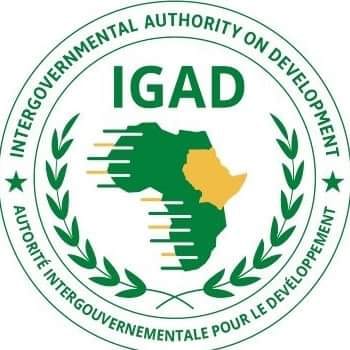Close to 28 mln People in IGAD Region Faced Acute Food Insecurity before COVID-19 - ENA English
Close to 28 mln People in IGAD Region Faced Acute Food Insecurity before COVID-19

Addis Ababa, June 4/2020( ENA) An estimated 27.6 million people across the IGAD region classified as worse levels of acute food insecurity in 2019, according to a new report released by the Intergovernmental Authority on Development (IGAD).
Without taking into account the effects of COVID-19, projections indicate that around 25 million people would face acute food insecurity in the region requiring urgent action (IPC Phase 3 or above) in 2020.
According to the report, there were three main drivers of food insecurity in the IGAD Region: climatic shocks, conflict and economic instability.
This figure represents 20 percent of the total population facing food insecurity that required urgent action across the world.
However, the ongoing COVID-19 pandemic is likely to push the numbers of acutely food-insecure people well beyond these early 2020 forecasts, it was stated.
This was revealed in the Regional Focus on the Intergovernmental Authority on Development (IGAD) Member States of the 2020 Global Report on Food Crises (GRFC) launched today.
The report is the culmination of a joint analysis led by the Food Security Information Network (FSIN), under the Global Network against Food Crises that provides a comprehensive regional context on food security.
“Our region faces multiple threats to food security. We are living challenging times with extreme climate events and the worst desert locust invasion in decades,” said Workneh Geneyehu, IGAD ExecutiveSecretary at the launch.
Currently, the region is grappling with the severe challenges of the COVID-19 pandemic and widespread flooding of arable lands, he added.
“You are three times more likely to sleep hungry in the IGAD region compared to any other part of the world,” the ExecutiveSecretary said to point up the severity of the food insecurity in the region.
He further stated that the report provides vital evidence to inform coordinated and cost-efficient strategies to tackle the root cause of the food crisis in the IGAD region.
“The food security outlook for 2020 was of concern with locust swarms before COVID-19,” said World Food Program (WFP) Regional Director, Michael Dunford.
Now the health crisis became a global-pandemic risks broadening into a socio-economic shock multiplying the total number of hungry people in the region, he noted.
The Food and Agriculture Organization of the United Nations’ (FAO) Sub-Regional Coordinator for Eastern Africa, David Phiri said on his part that “our attention must now turn to what can be done to reduce the number of food insecure people in the region.”
Phiri pointed out that building resilient food system is now more crucial than ever as the disruptive impact of COVID-19, the desert locust, recurrent flooding, and conflict will continue to hamper the availability of food and people’s access to it across the sub-region.
The regional report serves as an important milestone towards delivering the commitment of the Intergovernmental Authority on Development (IGAD) to fight acute hunger and malnutrition in the region.